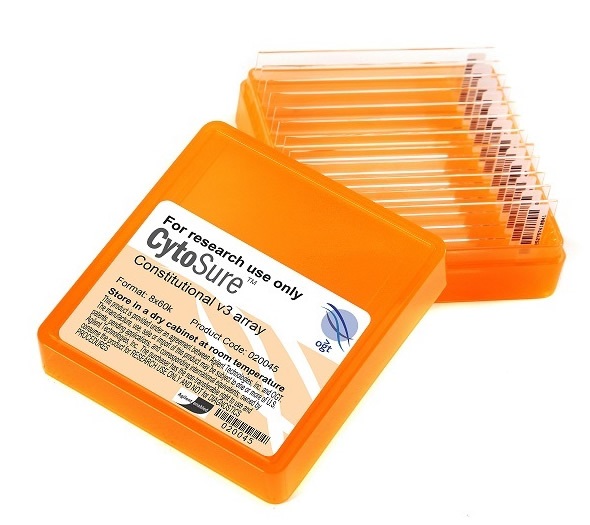Oxford Gene Technology (OGT), The Molecular Genetics Company, has made its European Human Genetics (ESHG) Conference workshop freely available to view online. The presentation, entitled “The Next Generation of Microarrays: Identifying a Broader Range of Genetic Syndromes Using Exon–Focussed Array Designs”, took place at the ESHG conference in Glasgow, UK on 8th June 2015. OGT also launched its CytoSure™ Constitutional v3 Arrays at the event.

Having become one of the premier events in the field of human genetics, ESHG is a forum for all workers in human and medical genetics to review the latest advances and develop research collaborations. OGT’s workshop was one of the best attended workshops of the conference, with over 150 delegates turning up to learn how OGT has coupled its microarray design expertise with the latest developmental disorder content to create CytoSure Constitutional v3 arrays. Launched at the ESHG conference, these are the only arrays available with enhanced content from the Deciphering Developmental Disorders (DDD) study1,2 and ClinGen (formerly ISCA/ICCG) — enabling high-resolution CNV detection across ~500 genes of interest.
Senior Computational Biologist at OGT, Duarte Molha, discussed OGT’s advanced microarray design strategies to deliver the latest generation of exon-focused arrays for the accurate detection of small DNA deletions and duplications. In addition, Professor Madhuri Hegde PhD, FACMG, Professor of Human Genetics at Emory University School of Medicine presented how Emory University complements its next generation sequencing workflows with OGT’s CytoSure Medical Research Exome array to provide gold-standard CNV detection at the exon level. Visitors to OGT’s website can now experience the complete workshop.
For more information on OGT’s products and services, please visit www.ogt.com.
References
- Large-scale discovery of novel genetic causes of developmental disorders. The Deciphering Developmental Disorders Study. Fitzgerald, T.W. et al, Nature 519, 223–228 (12 March 2015)
- Genetic diagnosis of developmental disorders in the DDD study: a scalable analysis of genome-wide research data. Fitzgerald, T.W. et al, The Lancet 385, No. 9975, p1305–1314, (4 April 2015)
For further information, please contact:
Oxford Gene Technology, Begbroke Science Park, Begbroke Hill, Woodstock Road, Begbroke, Oxfordshire, OX5 1PF, U.K.
T: +44 (0) 1865 856826 ; F: +44 (0) 1865 848684
E: [email protected] ; W: www.ogt.com ; Twitter: @OxfordGeneTech
About Oxford Gene Technology
Oxford Gene Technology (OGT) provides world-class genetics research solutions to leading clinical and academic research institutions. Founded by Professor Sir Edwin Southern, and with customers in over 60 countries worldwide, OGT has a strong reputation and increasing share in the large and growing genomic medicine market. The Company’s Cytocell®, CytoSure™, SureSeq™ and Genefficiency™ range of fluorescence in situ hybridisation (FISH), microarray and next generation sequencing (NGS) products and services deliver high-quality genetic analysis, enabling accurate identification and confirmation of the causative variation underlying genetic disease.
For more information on the Company, please visit our website at www.ogt.com
CytoSure™, SureSeq™ and Genefficiency™: For Research Use Only; Not for Use in Diagnostic Procedures.
Some products may not be available in the US.
CytoSure: This product is provided under an agreement between Agilent Technologies, Inc., and OGT. The manufacture, use, sale or import of this product may be subject to one or more of U.S. patents, pending applications, and corresponding international equivalents, owned by Agilent Technologies, Inc. The purchaser has the non-transferable right to use and consume the product for RESEARCH USE ONLY AND NOT for DIAGNOSTICS PROCEDURES. It is not intended for use, and should not be used, for the diagnosis, prevention, monitoring, treatment or alleviation of any disease or condition, or for the investigation of any physiological process, in any identifiable human, or for any other medical purpose.